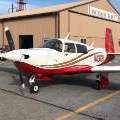J airfoil vs predecessors
-
Members Online
- kortopates
- GMBrown
- crazydave
- atpdave
- Fly Boomer
- Jim F
- PilotX
- MikeOH
- sdmideas
- 1980Mooney
- N201MKTurbo
- DEGWS
- redbaron1982
- AndreiC
- PT20J
- Crawfish
- CCowboy
- Dtips
- Mscheuer
- Q The Engineer
- Bpvlbv
- Fly_M20R
- Dickard
- christaylor302
- Aerodon
- Ron McBride
- jetdriven
- tankles
- FlyingDude
- MooneyMitch
- Jim Peace
- DonMuncy
- Joe Linnebur
- avrojockey


Recommended Posts
Join the conversation
You can post now and register later. If you have an account, sign in now to post with your account.